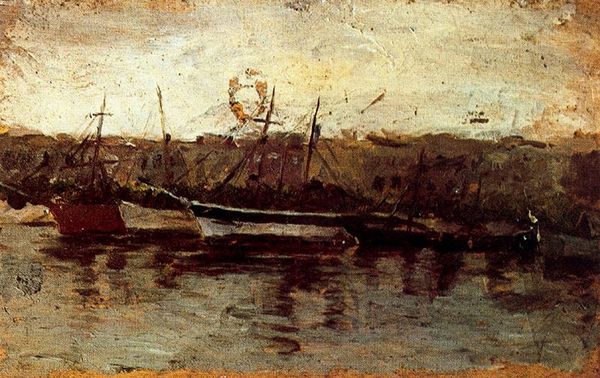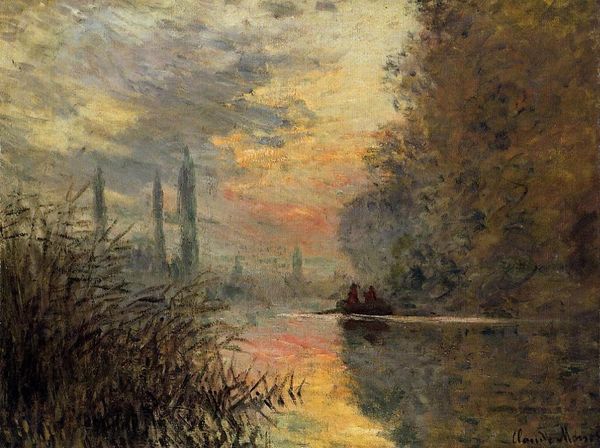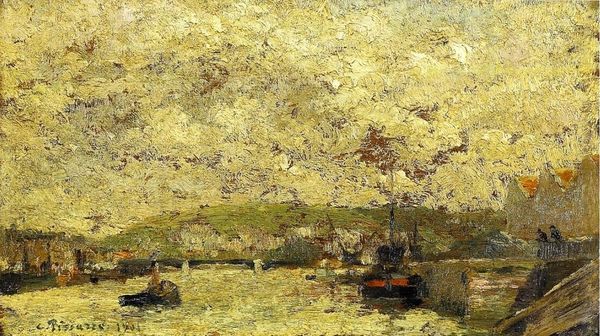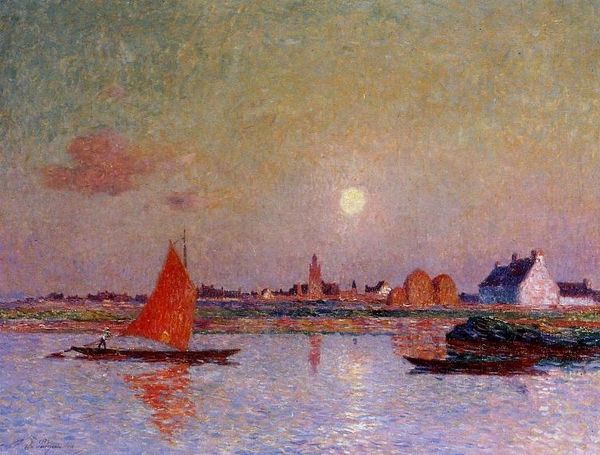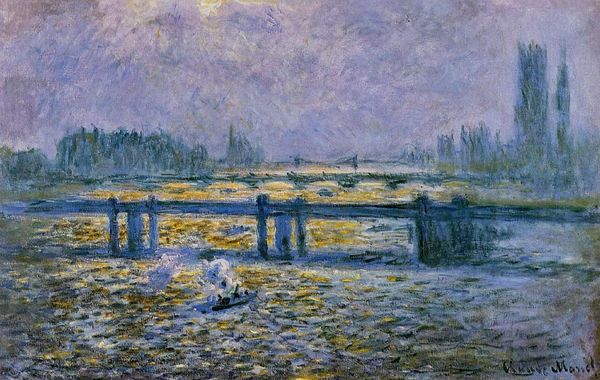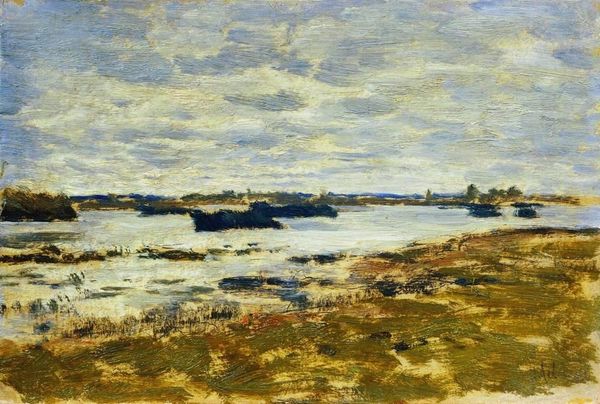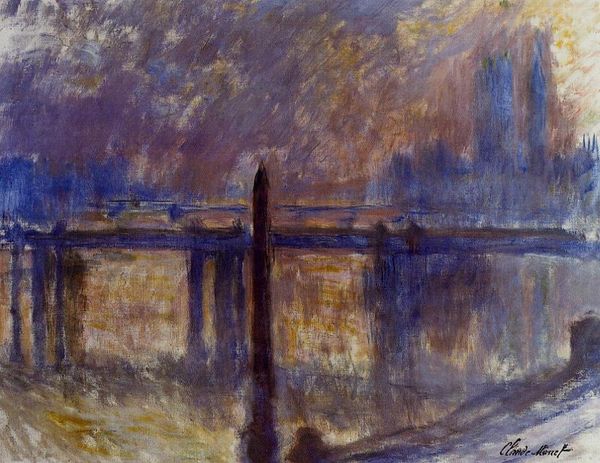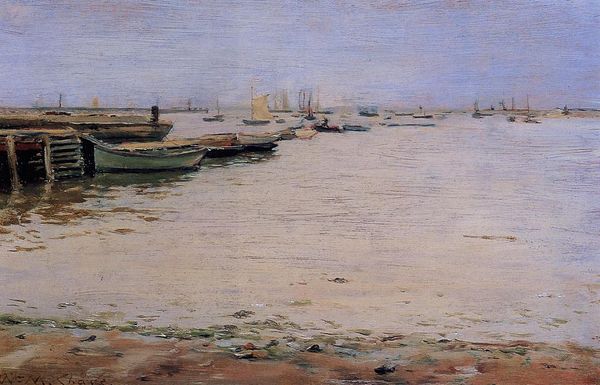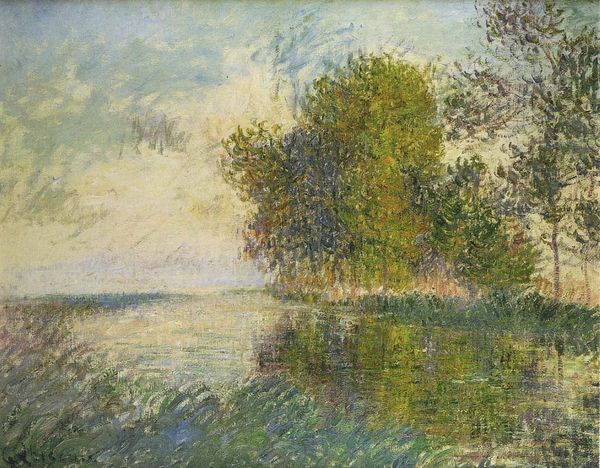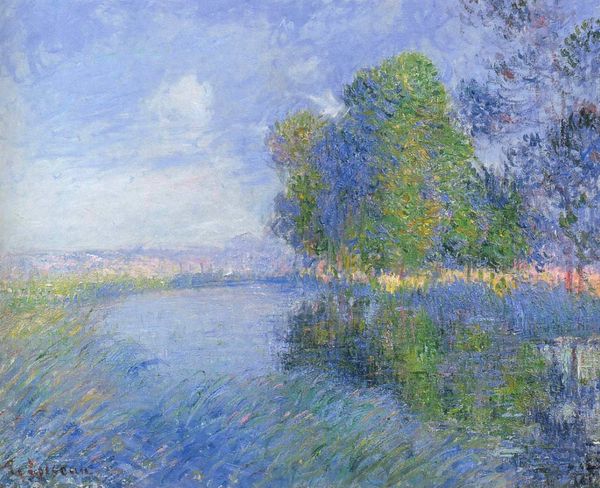
Dimensions: 12.7 x 22.86 cm
Copyright: Public domain
Curator: There’s an ethereal quality to James Abbott McNeill Whistler's "Note in Flesh Colour: The Guidecca," created around 1880. What are your immediate impressions? Editor: A hushed stillness. It's almost ghostly, a memory clinging to the paper. The pale hues create an atmosphere of serene melancholy. Curator: Whistler's "Notes" often captured fleeting moments, influenced by plein-air painting and impressionistic landscape techniques. Note the boats upon the ocean with just hints of colour and detail; it's an echo of Venice rather than a sharp portrait. This piece, seemingly executed in watercolor and pastel, speaks to Whistler's search for pure aesthetic harmony. Do you read any specific symbolism in that reductive approach? Editor: I think Whistler is attempting to distill the essence of Venice, stripping away the overt signifiers, the gondolas and palazzos we might expect. He's seeking to convey Venice through mood and suggestion rather than strict representation. Those soft colours are quite emotionally loaded—the pink is associated with affection but also with the body... flesh as you mentioned earlier. Curator: Precisely, that subdued palette evokes Venice's lagoon light, a character in itself that has shaped so many artistic depictions. However, consider that the title points us to the human within the vista, to a carnal memory. The boats and their occupants almost become spectres. They are the silent witnesses to time's passage reflected on the Venetian lagoon. Editor: Right, the title re-centers us, and the placement of the figures is critical. They’re silhouetted, anchors within this shifting scene, but equally ephemeral, potentially highlighting a transient, rather alienated vision of modern life and work. What did Venice represent politically at the time it was created? Curator: A city steeped in historical significance, obviously, a site of Romantic and Orientalist projection. After Italian Unification, it struggled to maintain importance, undergoing renovation to become once again a key symbol. Editor: Whistler taps into Venice’s liminal state—both fading glory and subject of ongoing cultural reinterpretation. It gives this small study a powerful tension. Curator: Agreed. Whistler, by rendering a scene in such muted terms, leaves a lingering sense of contemplation. He’s inviting us to listen closely to the silence and appreciate how even absence communicates presence. Editor: It makes one consider what elements are most important to one's personal symbol or place, no? Thanks to this chat, I’m left thinking more deeply about memory and place, here.
Comments
No comments
Be the first to comment and join the conversation on the ultimate creative platform.

